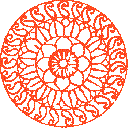|
|
|
|
Initiation, priestly ordination, temple festivals –
ritual traditions in the south Indian temple city of Kanchipuram
Kāñcīpuram is an old religious center of south India. From about the 3rd century BC, it played a major role in the cultural and political history of the region and later became the capital of the Pallava dynasty. There is ample evidence of the religious plurality of the place from as early as the 7th century. Kāñcīpuram attracted scholars, ritual experts, ascetics, monks and gurus of different religious and philosophic traditions, including Buddhism, Jainism, Vaiṣṇavism and Śaivism. Today, Vaiṣṇavism, Śaivism and Śāktism are of major importance to the ritual dynamics of the city.
Our research project focuses on rituals in the three largest temples of Kāñcīpuram:
- the Tāntric-Śāktic temple of the goddess Kāmākṣī,
- the Tāntric-Śaivite Ekāmbareśvara temple and
- the Varadarāja temple of the Vaiṣṇavite Pāñcarātra tradition.
On the basis of intensive field research and textual studies, we are drawing the first comprehensive picture of the historical, institutional and cultural factors that influence the ritual dynamics and shape the interplay of differing ritual traditions in a south Indian city.
Initiation rituals, priestly ordination, and temple festivals, are the focus of our exploration.
|
|
|


